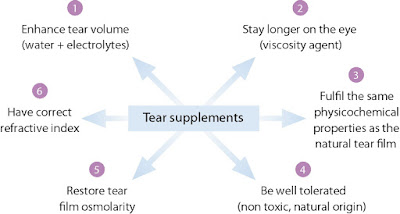OSTENIL® TENDON injections are more effective than corticosteroid injections for the treatment of tendon disorders
Tendon disorders are the most frequent cause of pain in the musculoskeletal system of physically active individuals. There are various conservative treatment methods, but most of them only offer short-term relief. When injecting steroids in the elbow region, the risk of tendon damage also increases.1
A meta-analysis showed that steroid injections are not more effective than placebos.
2 Is there also a treatment option that is effective and offers more long-term relief of tendon disorders when taken?
Gorelick et al.
3,4 investigated the effectiveness of sodium hyaluronate for the treatment of various tendon disorders. 157 patients diagnosed with tennis elbow were included in the study and divided into three groups. 54 patients received a corticosteroid injection, 49 patients were given an
injection with OSTENIL® TENDON (2% sodium hyaluronate) and 54 patients received a combination therapy comprising an initial corticosteroid injection and, 7-10 days later, an OSTENIL
® TENDON injection. The efficacy was evaluated using the VAS score and DASH score (Disabilities of Arm, Shoulder and Hand). Follow-up examinations were carried out 6 and 12 months after treatment.
There was a significant reduction in pain after one year compared to the initial value (p<0.0001) for all three forms of treatment. The treatments with OSTENIL
® TENDON and the combination therapy were significantly better (p<0.001) than the treatment with corticosteroids after one year. Furthermore, in comparison to the corticosteroid group, there were no side effects (0 vs 10). The level of pain using the VAS scale dropped in the OSTENIL
® TENDON group from 10.0 to 0.5, while this only dropped to 5.5 in the corticosteroid group. After one year, combination therapy showed similar effects to the OSTENIL
® TENDON treatment, however, there were more side effects attributable to the corticosteroids. The long-term effect of the treatment with OSTENIL
® TENDON is also interesting. While pain in the OSTENIL
® TENDON group continued to subside over the course of the study, the corticosteroid group experienced an increase in pain again after 6 months.
►Conclusion: An injection with OSTENIL® TENDON is significantly superior to treatment with corticosteroids for the treatment of tennis elbow. The effect of the treatment lasts for a period of at least one year.
A further study investigated the effect of the OSTENIL® TENDON treatment for problems with the Achilles tendon. 56 patients with a newly diagnosed case of Achilles tendinopathy which had not yet been treated were included in the study. 20 patients received an injection with OSTENIL® TENDON, 19 patients were given an injection with corticosteroids and another 17 patients received a combination therapy of rest, splint, physiotherapy and NSARs. The VAS pain scale and the FADI score (Foot and Ankle Disability Index) were used to evaluate efficacy. Follow-up examinations were carried out after 6 weeks and after 3, 6 and 12 months.
All patients suffered from severe pain in the Achilles tendon at the start of the study. The value was 10 cm on the VAS pain scale. All treatment groups exhibited a reduction in pain over the course of the study. However, the sodium hyaluronate group (SH group) was superior to the corticosteroid group at all intervals during the study. Superiority achieved statistical significance after 6 and after 12 months. The carryover effect of the OSTENIL® TENDON treatment could also be seen again here. Even one year after the end of treatment, the pain subsided continuously, while there was an increase in pain again for the steroid group. The effect of corticosteroid treatment corresponded to the effect of conservative treatment in the long term.
Both studies confirm the superiority of the OSTENIL® TENDON treatment compared to the corticosteroid treatment. The effect of the corticosteroid treatment decreases over time, while the effect of OSTENIL® TENDON is still visible even after one year.
►Conclusion: The OSTENIL® TENDON injections are significantly more effective than corticosteroid injections for the treatment of tennis elbow and problems with the Achilles tendon. The effect lasts for a period of at least 12 months.
References:
1 Osborne H (2010): Stop injecting corticosteroid into patients with tennis elbow, they are much more likely to get better by themselves! J Sci Med Sport 13: 380-381.
2 Krogh TP, Bartels EM, Ellingsen T, Stengaard Pedersen K, Buchbinder R, et al. (2013): Comparative effectiveness of injection therapies in lateral epicondylitis: A systematic review and network meta-analysis of randomized controlled trials. Am J Sports Med 41: 1435-1446.
3 Gorelick L, Gorelick AR, Saab A, Ram E, Robinson D (2015): Lateral Epicondylitis Injection Therapy: A Safety and Efficacy Analysis of Hyaluronate versus Corticosteroid Injections. Adv Tech Biol Med 3: 130.
4 Gorelick L et al.; Single Hyaluronate Injection in the Management of Insertional Achilles Tendinopathy in Comparison to Corticosteroid Injections and Non-invasive Conservative Treatments, Sch Bull,: Jul 2015, 16-20.









